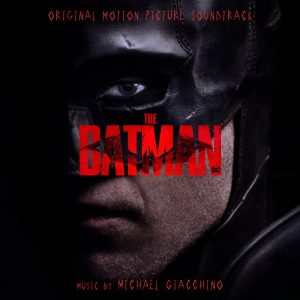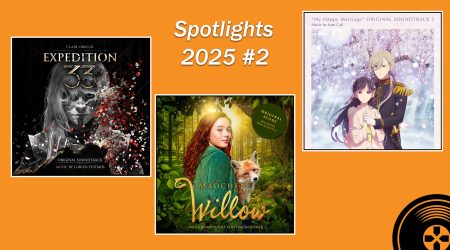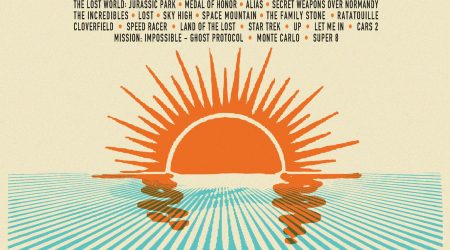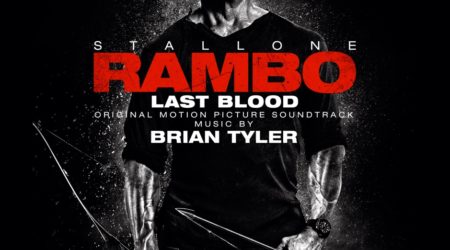
Batman movies have been quite successful in the past decades. There have been multiple reboots in that time period, all of which have also seen a couple of sequels. What all these movies have in common is that their music was quite important for them. I can still remember that I went to see Tim Burton’s Batman as a 12-year-old boy in the theater, and it was one of the first movies I had ever seen in one. Not only was I blown away by the visuals and the story, but I was also quite impressed with the music Danny Elfman had written, making it one of the first sparks for my passion for film music. Many other composers have written music for this dark superhero including Elliot Goldenthal and Hans Zimmer, with each of them introducing his own musical style for the hero.
A couple of years ago another Batman movie, with the title The Batman, was announced. A new Batman movie always excites me, but when I heard that Michael Giacchino would write the music for it I was even more thrilled. Giacchino has written superb scores for many high-profile movies, like the most recent Spider-Man movies or Star Wars: Rogue One. What I love about Giacchino’s music is that the majority of his soundtracks contain many thematic ideas, and they often sound very uplifting or emotional. A Batman movie requires a very different sound – dark, ominous and moody – and I was quite curious what Giacchino’s take on that would be.
As is becoming a tradition, Giacchino presents his themes on a silver platter. Not only does each track title contain a pun, he also likes to add suites containing the themes for his movies to his soundtrack albums. In the case of The Batman, three suites are present, one for each main theme. The first theme is, of course, for Batman himself, which can be heard in “The Batman.” Actually, the theme consists of two parts. The most important one is a pattern of four notes, where the first three are the same, and the fourth is a bit lower. Since it’s the important one, it can be heard in all kinds of variations throughout the score. The second part of the theme is a wonderful, emotional and orchestral piece. While the four notes present the dark and mysterious Batman personality that is meant to scare the bad guys, this gorgeous orchestral cue presents the hero behind the mask.
The second theme in the movie is meant for the villain The Riddler. Since his character is all about mystery and riddles, his theme is full of suspense. In “The Riddler” you can hear a mysterious-sounding cue with long melody lines and with a focus on a female vocalist. The music transitions into a bold-sounding orchestral piece later on in the track, until the vocalist returns to conclude the piece. In “Catwoman” you can listen to the third theme, meant for Catwoman, which is a wonderful orchestral piece, with sweeping violin lines, representing her sensual feline traits. In the middle part of the cue the music transitions into more of a soothing jazz song.
With the themes explained, it is time to examine how Giacchino has integrated them into the music, and I can happily say that he did that extremely well. The movie is more like a crime detective than an action movie, and the score reflects that. Most of the time, the music is dark, ominous and slow, and is meant to provide the mood for the scenes. In most cases I do not find these kinds of soundtracks that interesting, but that is certainly not the case when Giacchino is the composer. When you are listening to this score there is always something clever happening in the music, especially how the themes are used. With the pattern of four notes many things can be done and in the majority of tracks, you can hear Giacchino integrate it in skillful ways. One of those highlights is when this pattern is used as a foundation for other themes. At the end of “Are You a Kenzie or a Can’t‐zie?” you can hear conflict between the Batman theme and the feline violin sweeps for Catwoman. In “Hoarding School“ the Batman pattern is used as a foundation for the Riddler theme, and it is very interesting to hear how these two ideas blend together.
While the music is dark and moody most of the time, when the hero part of the Batman theme begins to play, the atmosphere becomes more uplifting. Amazing versions of this theme can be heard in “Funeral and Far Between,” in which the cue is introduced for the first time and in “All’s Well That Ends Farewell,” it serves as the finale for the movie.
There are two musical pieces I would like to highlight before writing my conclusion. The first is the last track of the album, “Sonata in Darkness,” which is a gorgeous piano piece containing all the themes. The second one was quite interesting and is not actually on the score. It is the song “Something in the Way” by Nirvana. It can be heard twice in the movie and has apparently become a hit again because of The Batman. What I find interesting in the song is that, while it fits perfectly with the movie, there is also a resemblance between the two main chords of the song and Batman’s four-note pattern. It makes me wonder if there is a connection between the two.
I was convinced that Michael Giacchino would pull off writing an excellent score for a Batman movie, but I did not have a clue as to how he would do it. The fact that he took a pattern of four notes, in which only one is different from the other, as the foundation for the whole soundtrack just blew me away. As far as I recall, only the theme from Jaws by John Williams was able to pull that off with just two different notes. I also loved the movie. It was an excellent and refreshing new take on the Batman story, and the music played a huge role in my appreciation. Maybe there was a 12-year old boy in the theater somewhere who noticed the music as well, and maybe it will light a spark in him as it did for me more than 30 years ago. The music is worthy of such an honor.
Listen or buy
- Buy this soundtrack from Amazon.com or Apple Music
- Listen to this soundtrack on Spotify
Tracklist
The highlights are in bold.
- Can’t Fight City Halloween (4:04)
- Mayoral Ducting (2:34)
- It’s Raining Vengeance (4:31)
- Don’t Be Voyeur with Me (2:38)
- Crossing the Feline (1:46)
- Gannika Girl (2:30)
- Moving in for the Gil (4:23)
- Funeral and Far Between (1:45)
- Collar ID (1:15)
- Escaped Crusader (2:44)
- Penguin of Guilt (3:44)
- Highway to the Anger Zone (5:19)
- World’s Worst Translator (3:34)
- Riddles, Riddles Everywhere (1:54)
- Meow and You and Everyone We Know (5:18)
- For All Your Pennyworth (2:38)
- Are You a Kenzie or a Can’t‐zie? (5:45)
- An Im‐purr‐fect Murder (3:48)
- The Great Pumpkin Pie (2:22)
- Hoarding School (4:55)
- A Flood of Terrors (4:29)
- A Bat in the Rafters, Pt. 1 (4:33)
- A Bat in the Rafters, Pt. 2 (6:42)
- The Bat’s True Calling (3:05)
- All’s Well That Ends Farewell (2:41)
- The Batman (6:47)
- The Riddler (5:01)
- Catwoman (3:03)
- Sonata in Darkness (12:11)
Total length: 1 hour and 56 minutes
WaterTower Music (2022)




